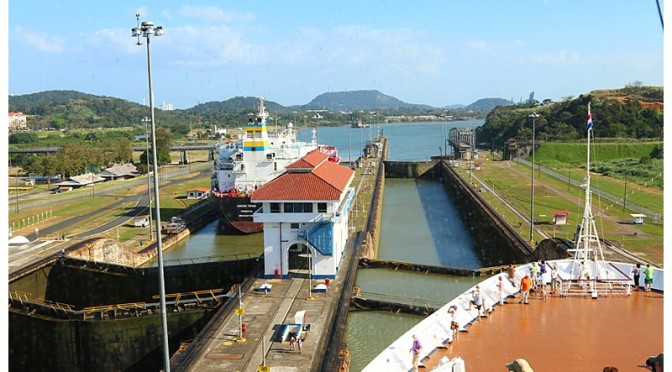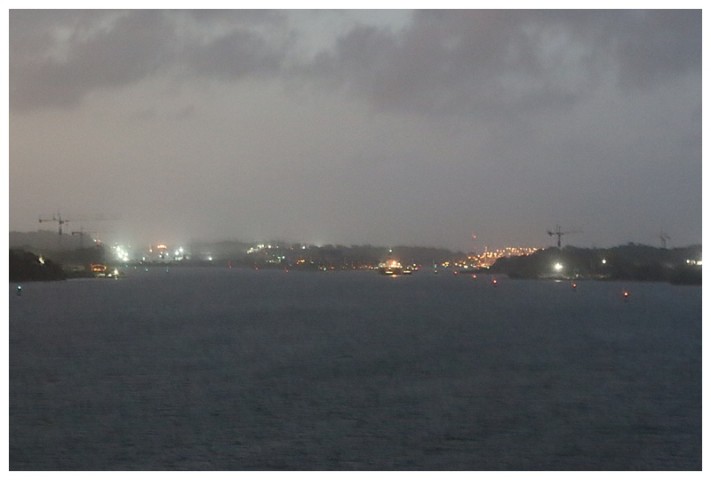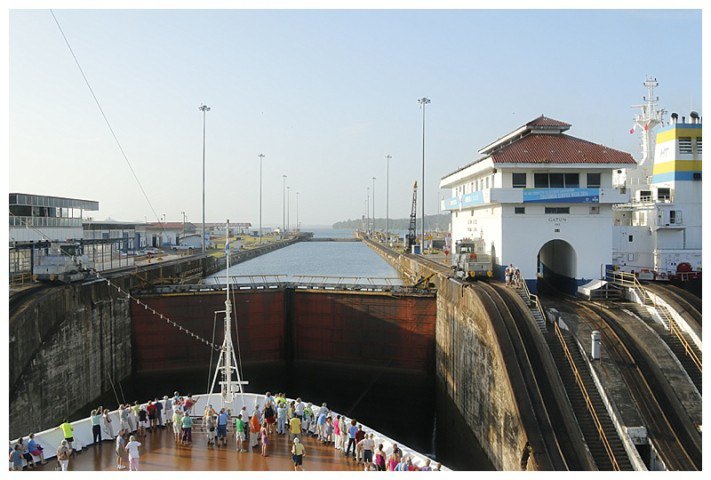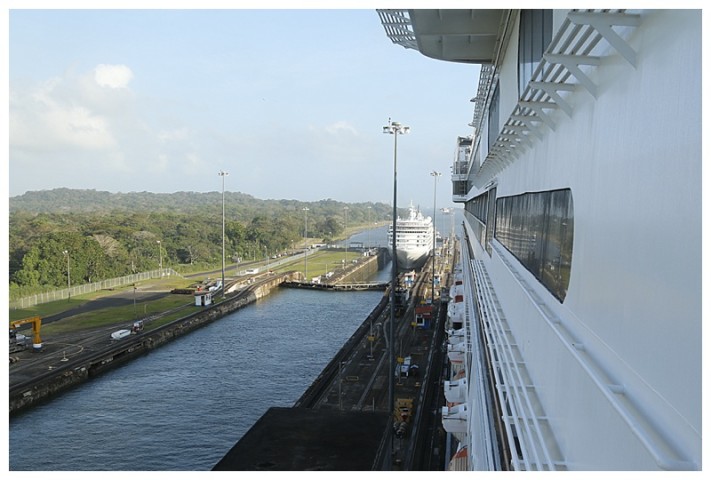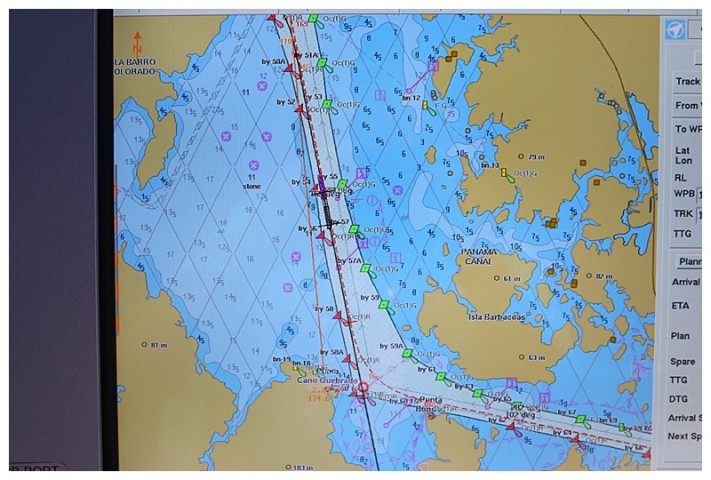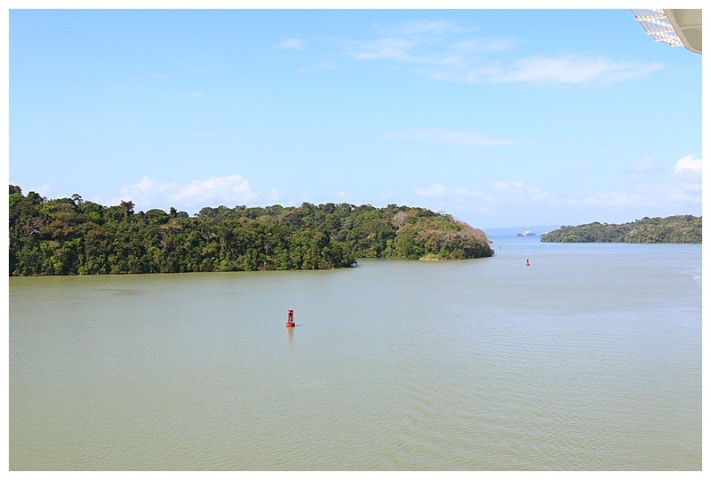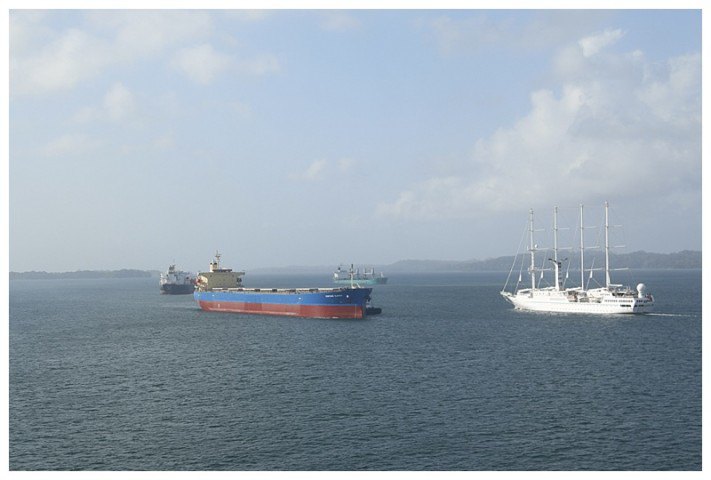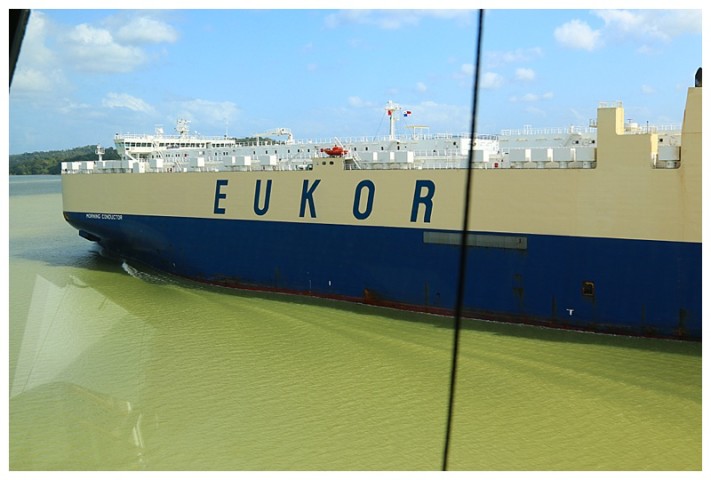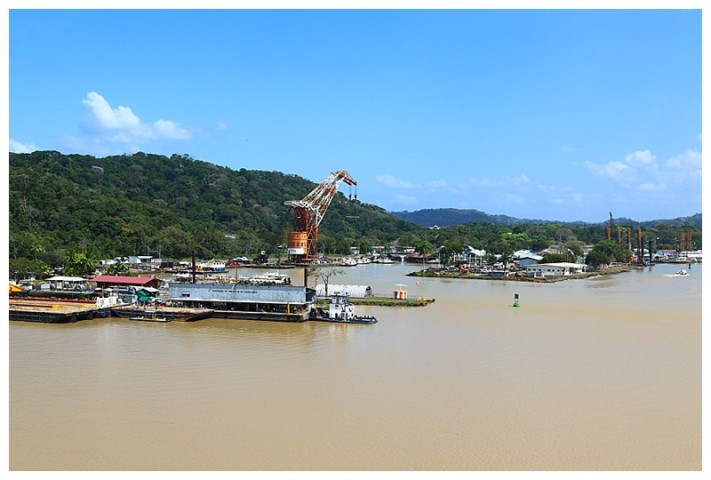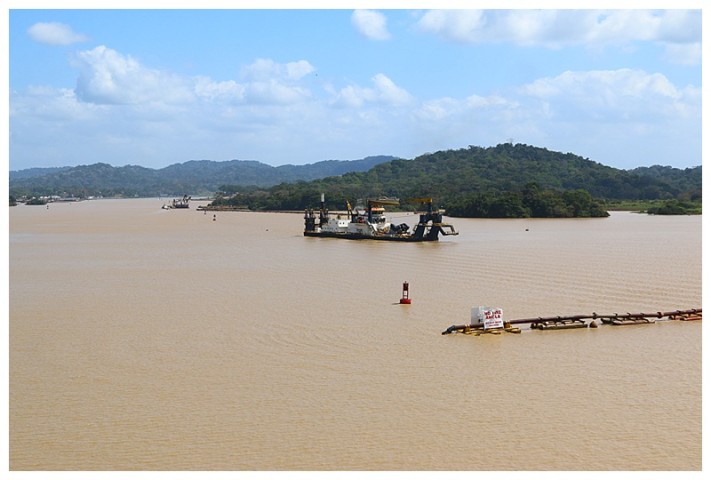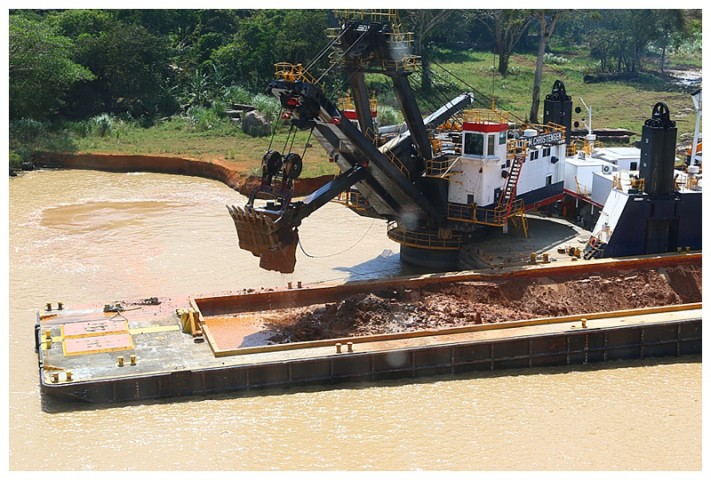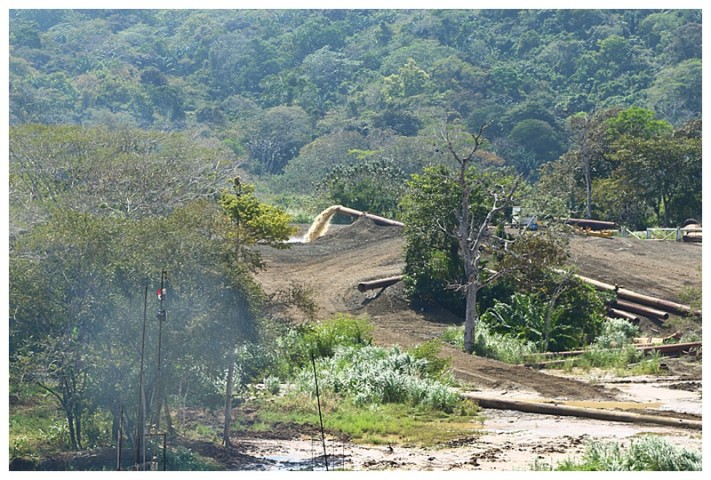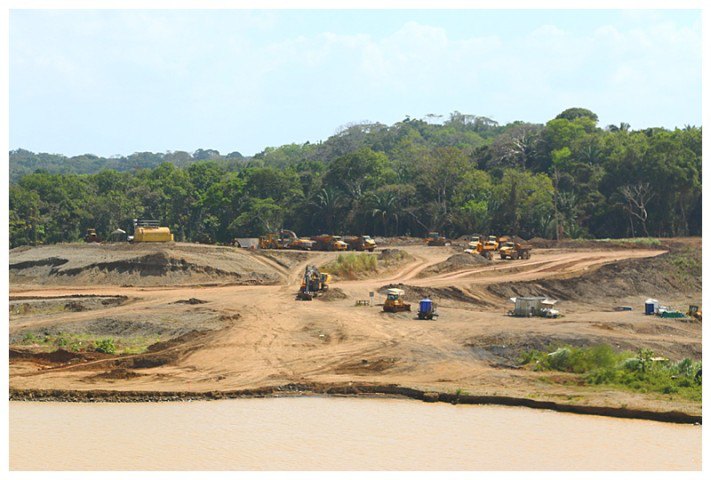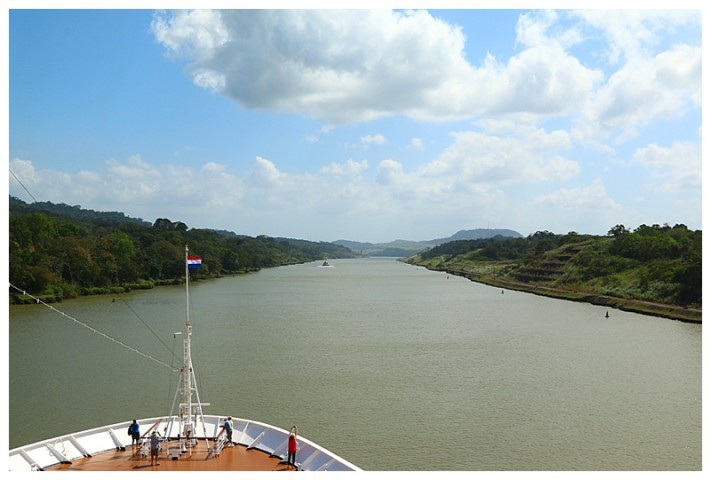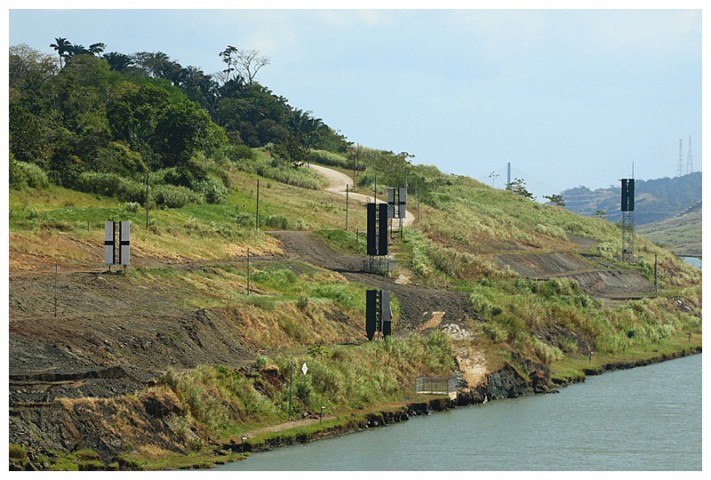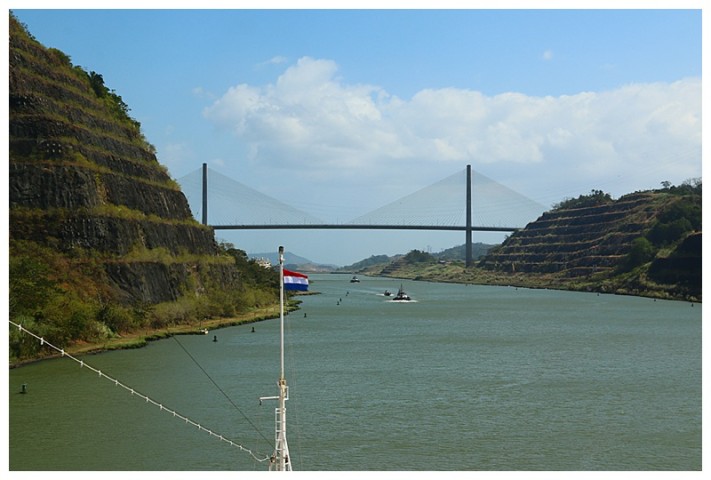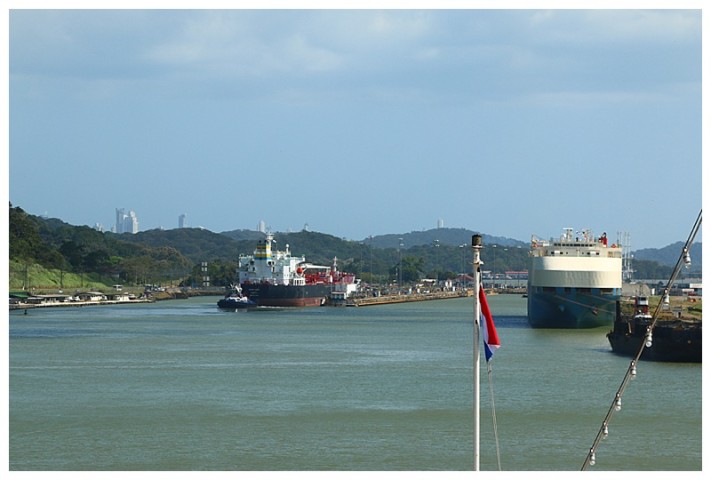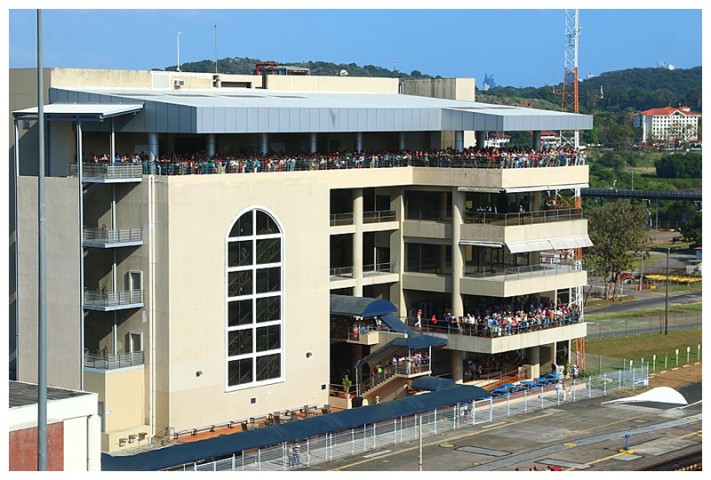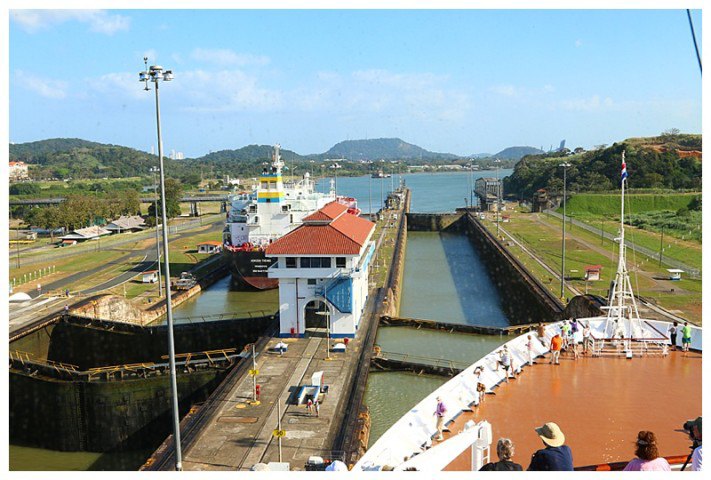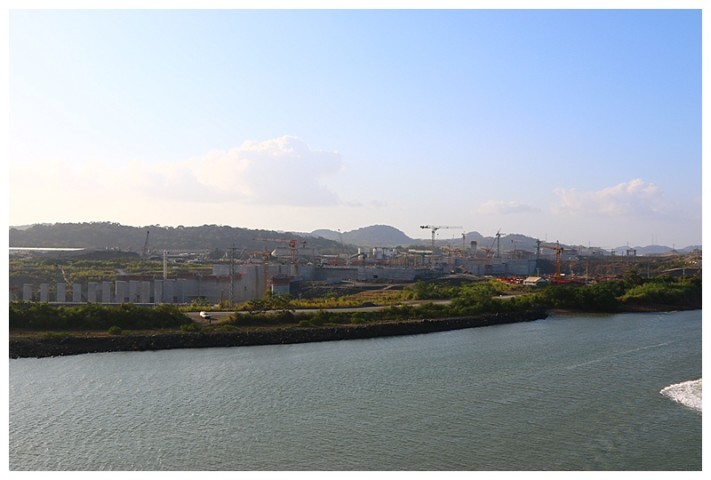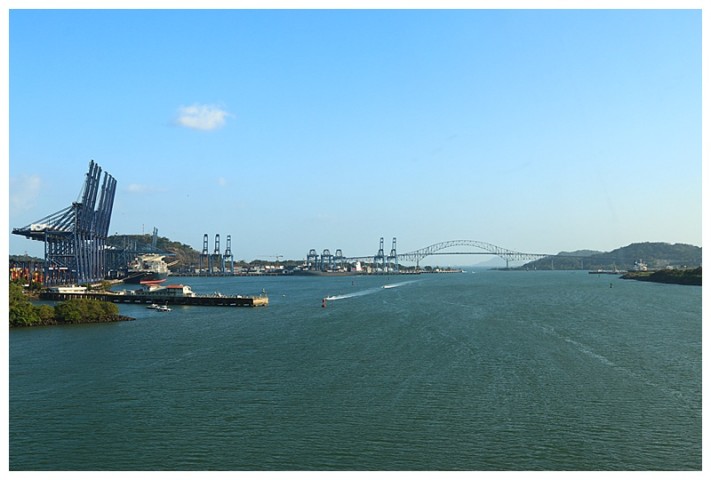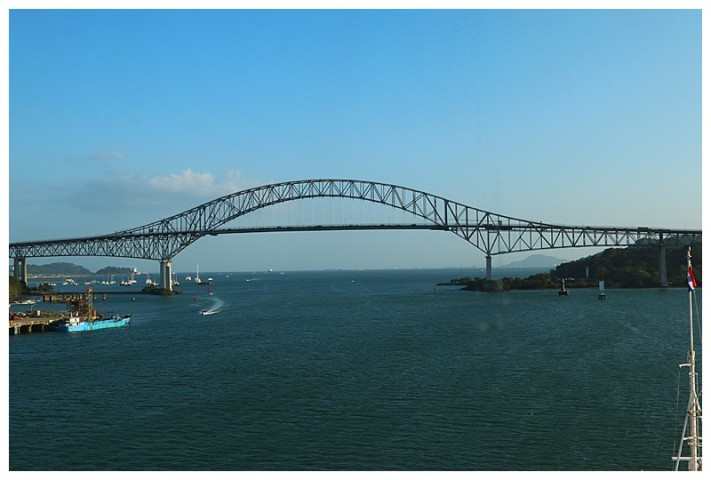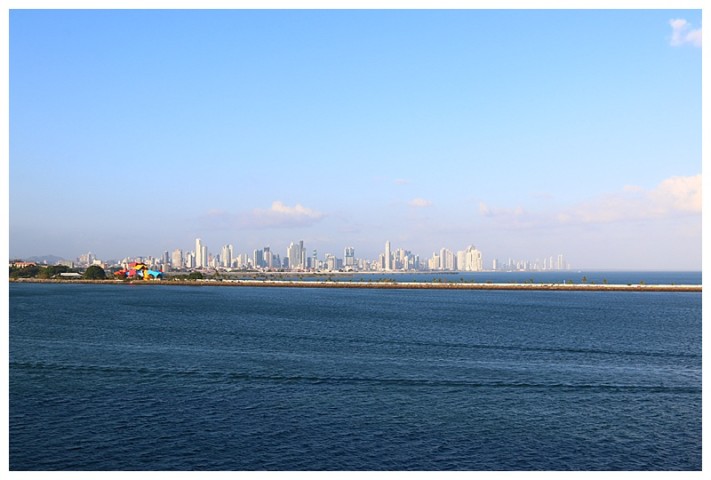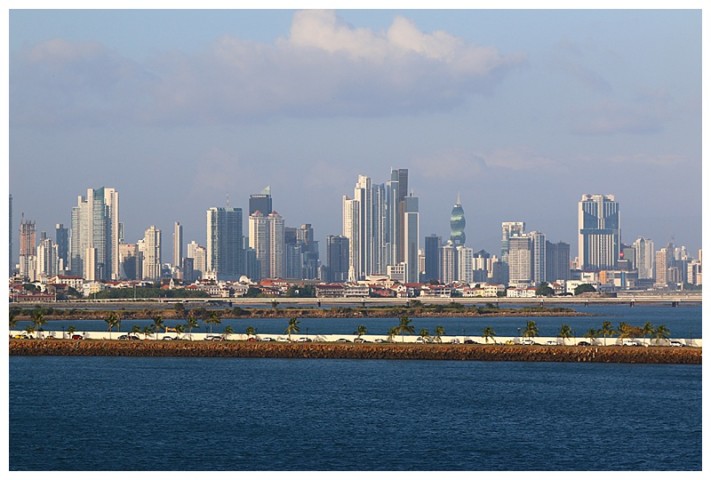We were scheduled to depart the San Blas Islands at 6 p.m. on Saturday, however, to arrive at the Panama Canal at 5 a.m. on Sunday, we required a speed of 7 kts. Herein lay a challenge; our stabilisers are not very effective at that speed and so, as a consequence, we remained at anchor until 8:30 p.m. and this gave a speed required of 10 knots, at which speed the stabilisers work effectively.
We weaved our way back through the reefs and islands to the open sea and I was pleased that I had made the ‘delay’ decision, the Caribbean was still rough and had I not done so, the night would have been ‘uncomfortable’ 
The Canal authorities had asked us to be at Cristobal breakwaters for 5 a.m. There are always a vast number of ships in the approaches, those leaving or entering and others at anchor; one has to diligent in such circumstances and so, at 3:15 a.m. my call from the Bridge awoke me. Coffee, (of course), in hand, I arrived on the Bridge. Radars humming, the glow of instrument lighting and, outside the windows, the lights of scores of vessels, not to mention Cristobal’s.
Our first report point to Cristobal signal station was at 12 miles off the entrance; they accepted our transmission and that was it. At 8 miles off they called us, “please time your arrival for 5:40”, damn, I could have had more time in bed 
The delay was because ‘northbound’ ships, having been transiting during the night, were delayed and as a consequence, the ‘southbound’ ships, (including us) were delayed. We took a 180° turn and headed north-east for a while, killing time until we could turn again and make our ETA.
Like ducks in a row, 20 minutes apart, southbound ships made their way towards the breakwaters and the pilot station. Here we slowly made our way down the well-buoyed channel, the lights of which looked more akin to an airport runway. Ahead of us, at the southern end of the channel, 2 green leading-lights assisted us; both on towers, 1 higher and behind the other, if they are in-line then one knows we are on the correct track.
Pilots and authorities board, one of whom is an ‘inspector’; he ensures that all is in order, that the vessel has no discrepancies and that she is capable of transit. All in order, we receive the ‘Zulu 14’ call sign; (ahead of us is Z12 and astern Z16 and so forth. We won’t use our “Amsterdam” name at all, always the Canal call-sign).
We follow Z12, a product carrier and Z10, the “Wind Spirit”, previously owned by HAL’s Windstar group. The itinerary I published on my blog had, of course, gone to out of the window, the 40-minute delay on arrival being the cause.
Gatun is our first lock; it is in fact a ‘flight’ of locks, entering the first, pumped up and then into the next. It’s a ‘tricky’ maneuver; getting the ship alongside the approach wall, so the locomotives can get their wires attached. On the long, centre approach wall, one can attach 3 locos, (named ‘centre’ 1, 2 and 3, believe it or not) 
Having departed Gatun locks, we enter Gatun lake, the ‘powerhouse’ of the Canal lock system. As there was a further delay further south, we ‘pottle’ across the lake at a sedate 5 knots. We weave through the buoyed channel, passing northbound vessels, their proximity, by necessity, being close. As we do so, jungle on either side, there is little sign of human habitation.
From Gatun Lake, we pass Gamboa, the hub of the Canal’s dredge and work operation. With the construction of 3 new, massive locks there is a need to widen the canal to take the juggernauts which will use it in 2017. Because the dredgers take up some of the channel, there is a one-way system in place. The Culebra Cut has always been one-way, (at least in the time I have transited), as a result there are constant changes of speed while we arrange suitable passing areas for northbound ships we pass.
Once past Gamboa, into the ‘Cut’, this section was constantly under the risk of landslides and consequently the sides have been ‘stepped’, with massive bolts drilled into the faces.
At the end of the Cut lies the final 2 sets of locks; having been ‘lifted’ in Gatun, we now ‘drop’ in Pedro Miguel and finally, Miraflores locks.
We pass the construction site of the new Pacific lock.
Finally, (almost 14 hours), we’re into the Pacific. We pass Balboa port; here Container ships discharge their boxes. Rather than go through the Canal, some of them stop here and the boxes are rail-shipped to Cristobal (and vice versa), where they are loaded onto another ship.
Under the Bridge of the Americas as we disembark our pilots, we’re on our way to Manta, Ecuador and the vista of Panama (city) is on our port side as we glide down the channel to the open sea.
As I write, we southbound in the Pacific under leaden skies, however the winds are following and the seas are calm. We are scheduled to arrive in Manta, Ecuador at 5 a.m. tomorrow (13th) morning. We cross the equator, thus entering southerly latitudes, at 1 a.m.
